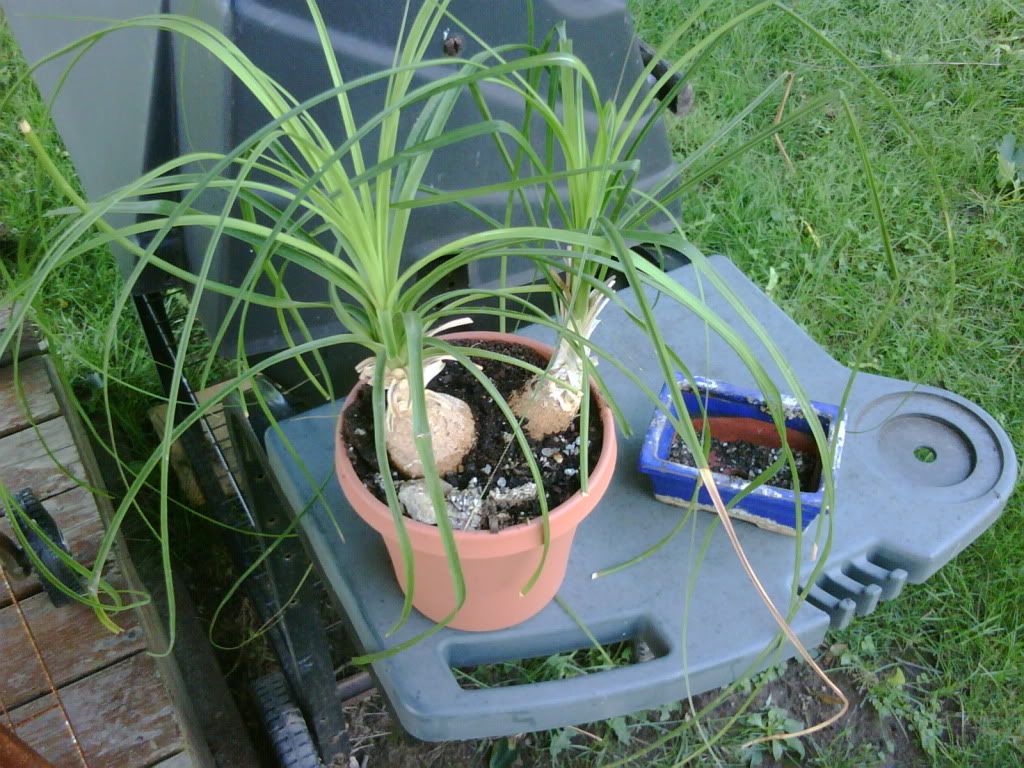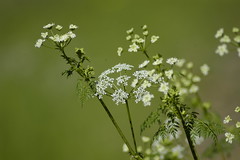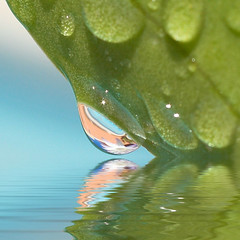❁ Welcome! ❁
I'm happy to have you here! Thank you for visiting and I hope you enjoy my blog.
Today I'm going to put in some autumn vegetables. Leeks, bok choy, brussels sprouts and broccoli. We're short on space since the summer veggies are still coming along, so I don't know how we're going to fit things in there. We've got some blank spots where nothing came up so that is where these veggies will go.
I have taken pictures but not able to post them yet. We've lots of zucchini and yellow squash. I've already cooked with them. Here's how I like to cook them.
Sunshine Tofu and Squash
* 1 small zucchini (or part of a large one), cut length-wise, then again, and then sliced (you should have triangle-shaped pieces)
* 1 yellow squash, also called summer squash, cut the same way as the zucchini
* 1 block of tofu, pressed a few minutes to release the water (tofu is optional; you can make this wihout it)
* 1/2 inch ginger, chopped finely
* 2 tbsp chopped garlic (love that garlic!)
* one small to medium onion, chopped
* 1/4 to 1/2 lemon
* handful of fresh dillweed
* olive oil
* salt and/or soy sauce or Bragg's Aminos
* white pepper (can use black also)
Sautee onions, garlic, and ginger in olive oil until onions are translucent. Add squash and sautee until nearly soft. Add tofu with soy sauce and salt/pepper to taste. Add lemon (start with 1/4 lemon) and dill. Continue to stir/sautee until the squash is soft. Add more lemon and dill if desired. I like mine tasting strongly of dill and slightly lemony.
When I was little there were so SOOOOOOOOO many honeybees where I grew up in Ohio. So many that once, when running barefoot with my siblings from our yard to the neighbor's yard, the bottom of my foot was painfully stung. After that I'd look along as I'd go in making my way barefoot across fields of clover.
The bees I mostly saw there were golden and fuzzy, like this!

Photo courtesy of Isolino
Now all I see are these smoother orangish-brown bees. And of course it's a rare find seeing a bee. I think I've seen only three or four so far this season:

According to this Wikipedia article, all bees in America are not native (I did not know!) and have been brought here from Europe.
I feel very taken by the plight of the honeybees in America right now, with their numbers having declined. My given name means "bee" or "honey" in Greek. There's a lovely chapter in the Qur'an called Surah An-Nahl, or The Bee (or The HoneyBee), describing how all things of the natural world - like the seas, stars, mountains - are proof of God and his power. The chapter goes quite into detail about bees.
Although I'm not a bee scientist :) my opinion is that nature's balance is being harmed by pesticides as well as the larger environmental issues. I think many things combined are contributing to the imbalance of the honeybee population here. I wonder if more "organic" areas have more bees.
I finished putting in the larger pots of herbs my friends gave me last weekend. Three large pots of lemongrass, lemon balm and American mint. My daughter came out later and said "Wow - our herb garden looks so...herb-garden-y".
Finished putting all the cactus plants and other houseplants outside. I hope they like it and grow nicely.
Remaining to do: repot my two remaining orchids. The one only has a couple of leaves and might not make it. The other is very strong. Neither have flowered since the first time (as usual with all my orchids.) I'm thinking a new mixture of fresh soil, and some regular attention might cheer them up. We moved many times over the years and I've lost so many due to a variety of reasons. I hope they like their new home now, settle and grow and flower. :)

Repotted also was my Elephant's Foot palm (pony tail palm) - it's been "bonsai'd" in this little blue container for years and years. I rarely water the thing and it's taken all of our moves and temperature changes without problem. If it dried too much I just trimmed back the leaves and watered it nicely. It's now got a new home in this pot and it looks happy. I can't water it too much so I'll be watching it to make sure that doesn't happen. Anyway I didn't know how huge they could get!

Itty Bitty
Originally uploaded by subtlegina
Cute, huh?
I just learned about poison hemlock. I want to share things as I learn here, so others can learn too. Hemlock is one of the most poison plants, an extract from which Socrates died.
I think most folks know what Queen Anne's Lace is. I thought everything I have ever seen that looks like Queen Anne's Lace was in fact Queen Anne's lace. WRONG.
Be aware of hemlock. All plant parts are poisonous. I read a story about someone picking berries for jam, and her husband had seeds that had fallen into his bowl of berries. She asked to see where he'd been picking and it was hemlock seeds that had fallen into his bowl! This jam was destined to be sold to folks. They dumped the berries and went elsewhere to pick. She was very smart to check anyway and be aware.

Queen Anne's Lace. Nice smooth green stem, typical flowers. Non-poisonous. Used in ancient medicinal remedies: the seeds being used as a contraceptive; the young root being edible. Also referred to as wild carrot.
Here is poison hemlock:

Posion Hemlock
Originally uploaded by Dale Hameister
Purple-spotted stem. Flowers similar to Queen Anne's Lace.
Also
water hemlock:


Notice the purple stems and the shape of the leaves.
Water hemlock has been listed as one of the most poisonous North American plants. American Indians used it to poison their arrow tips.
Interesting links10 Plants for your Pets to AvoidQueen Anne's LacePoison Hemlock - Weed of the Month
I just saw this post and wow what a picture!

I loved these flowers. Madeline, the poster, said they were tassel flowers. So I decided to do a bit of checking. Right away I found this entry at a seed seller
❁ Tassel Flower is a tender annual that grows to two or three feet in height. Flame-colored, button-like flowers appear on slender stems in summer. Sow seed after last frost in spring in a well-drained, sunny site. Thin seedlings so they are six inches apart. Tassel Flower is native of the Far East and was introduced into England in 1799. The species works well as a quick and curiously attractive filler in the summer flower border. ❁

I'd love to put some of these in my garden - especially the red ones.

Nature's Secret
Originally uploaded by Cesar R.
Testing a post from Flickr!











